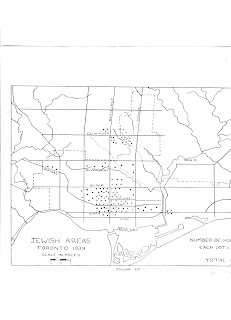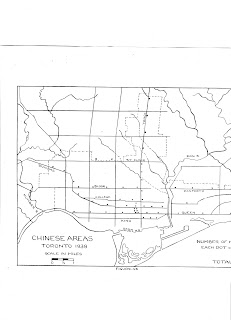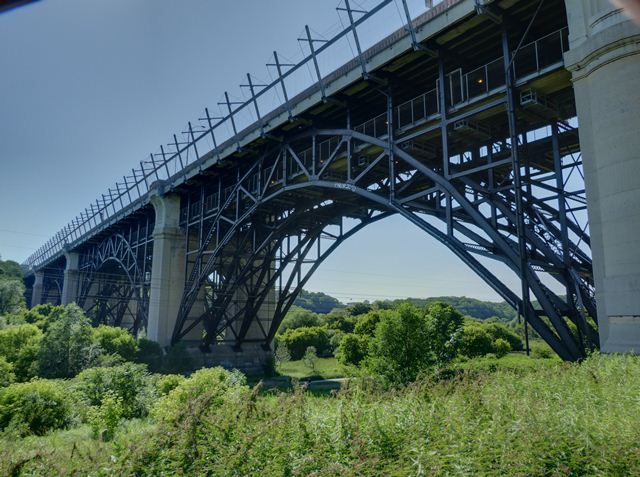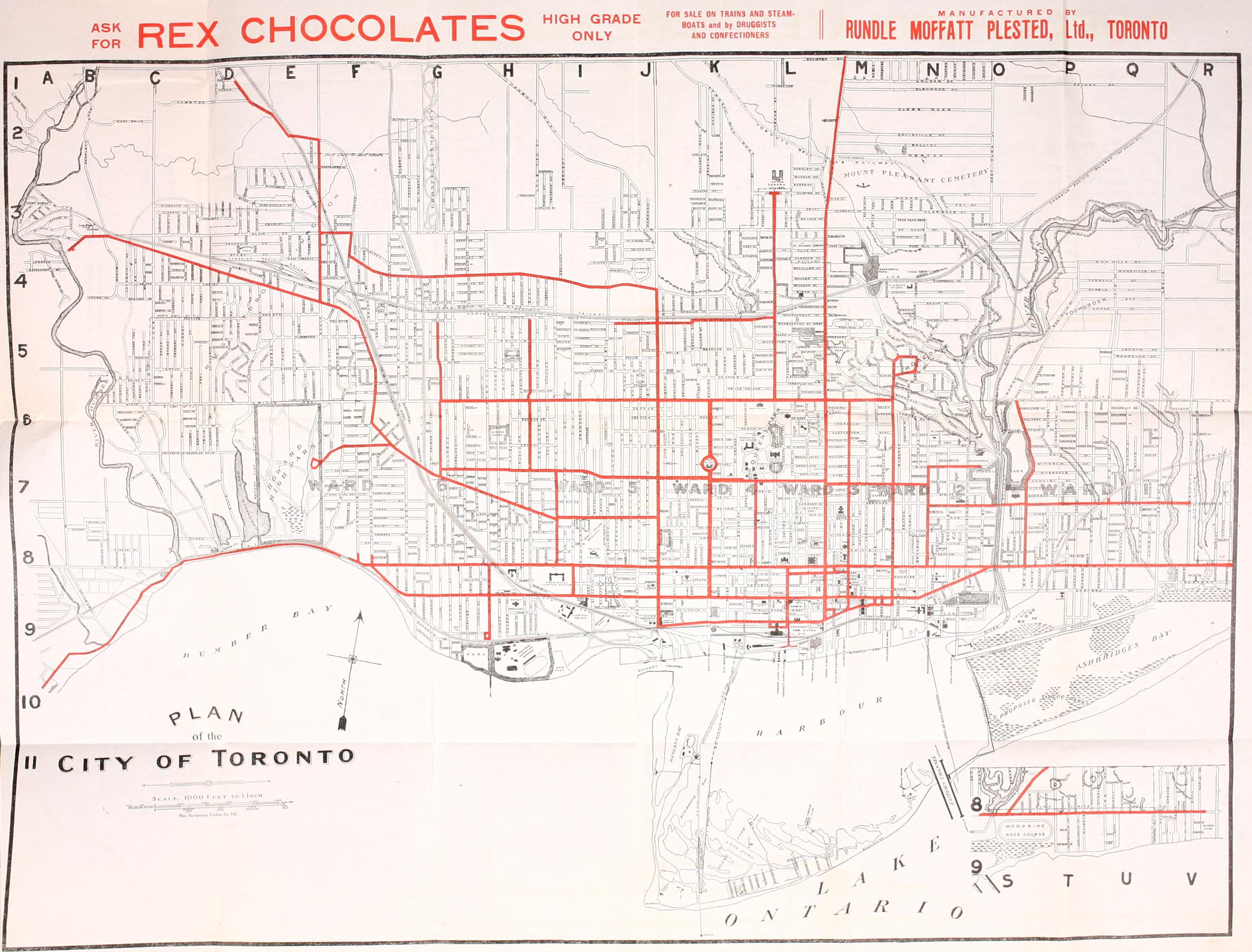Population of city and suburbs, 1921-1951
1921 1931 1941 1951
City of Toronto 521,893 631,207 667,457 675,754
Suburban municipalities 89,550 187,141 242,471 441,716
Metropolitan Toronto total 611,443 818,348 909,928 1,117,470
% in city 85.4 77.1 73.3 60.5
Toronto continued to annex suburbs until 1912, and by the 1920s, growth outside the city limits began to eclipse that in the city itself. During this decade, the suburban municipalities doubled in population and raw population growth nearly matched that of the city (+97,000 and +109,000, respectively). North Toronto, located north of St. Clair Ave. (wedged between Forest Hill and Leaside on the map) was mostly built up in the 1920s, as were remaining bits of the east end and the northwest fringe. By 1930, the city of Toronto had been pretty much been all built up.
During the 1920s, a number of municipalities were incorporated, mostly out of York Township which surrounded the city to the north and west. The rural northern section broke off and formed North York in 1922. East York was out of the remaining eastern section in 1923 and the affluent suburbs of Forest Hill and Swansea were incorporated in 1924 and 1925, respectively. In addition, Long Branch was incorporated out of a section of Etobicoke in 1930, next to the streetcar suburbs of Mimico and New Toronto that were incorporated in the 1910s. By 1930, the 12 suburban municipalities that would become part of the Metropolitan Toronto federation in 1954 had been incorporated.
Population of suburban municipalities, 1931-1951:
1931 1941 1951
East York 36,080 41,021 64,616
Etobicoke 13,769 18,973 53,779
Forest Hill 5,207 11,757 15,305
Leaside 938 6,183 16,223
Long Branch 3,962 5,172 8,727
Mimico 6,800 8,070 11,342
New Toronto 7,146 9,504 11,194
North York 13,210 22,908 85,897
Scarborough 20,682 24,303 56,692
Swansea 5,031 6,988 8,072
Weston 4,723 5,740 8,677
York 69,593 81,052 101,582
In his book
Unplanned Suburbs, Richard Harris notes that: "As late as 1931, the suburbs were clearly more blue-collar in character than the city, and a majority of suburbs were heavily dominated by blue collar settlement" (p. 50). This included the large predominantly working class suburbs of York and East York, as well as the industrial satellites of Mimico and New Toronto. During the 1910s and 1920s, these outlying suburbs attracted many working class immigrants from Britain, such as those in the skilled metal trades. However, Harris notes that the composition of the suburbs changed in the 1930s and 1940s as they attracted more professionals, managers and white collar workers. "By midcentury, the city was clearly more blue-collar (55 percent) than the suburbs (40 percent)."
(This isn't to say that the working class ceased to exist in the suburban fringes of Toronto. Indeed, York and East York townships were hit particularly hard by the depression. Appeals for annexation by the City of Toronto were rebuffed, which opposed taking in the "the semi-circle of bankrupt municipalities on its borders." In the 1940s, York Township became a stronghold for the socialist CCF.)
Indeed, this changing composition of the suburbs is evident by looking at the population changes during this period. Growth in the working class suburbs had slowed by the 1930s, likely due to the severe drop in immigration during the depression. In contrast, affluent Forest Hill tripled in population in the 1930s, and Leaside, which barely had any people in 1931, saw its population skyrocket. In Etobicoke, growth was almost certainly concentrated in the affluent Kingsway area. In the 1940s, the well-to-do led the way in the mass migration to the postwar suburbs of Etobicoke and North York.
In 1951, a majority of residents still lived in the city proper, but this would change dramatically a decade later.













.png)